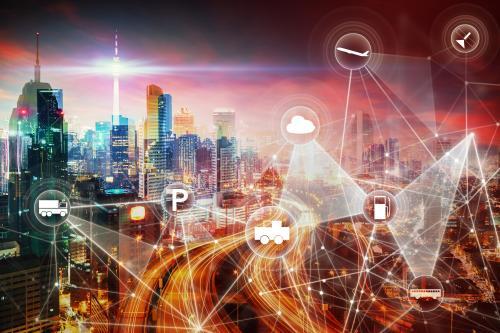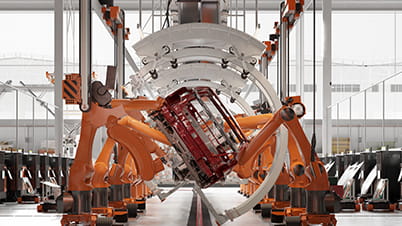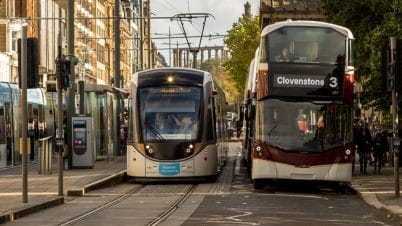Smart cities that adopt a plan for connected transportation have the opportunity to create easy to navigate, safe and secure highways.
Cars are getting smarter which means roads have to get smarter too. Tackling road safety with sensors and surveillance can help manage everything from reducing the number of cars sitting at an intersection, to monitoring speeds, temperatures and mechanical defects. Brakes that can be automatically applied, and on-board cameras that let drivers and on board systems see what’s going on beside and behind them make everyone a little safer.

So the question becomes, how do we relieve the pressure and improve the situation for everyone?
That’s where Intelligent Transportation Systems (ITS) come in. As urban centers become smart cities they are looking at how to best implement IP connectivity and the Internet of Things (IoT) to:
• Increase safety
• Reduce congestion
• Improve the traveler’s journey
• Optimize city operations
Intelligent transportation systems (ITS) with flexible technology mean transportation operators can scale to manage whatever rush hour throws at them and that can help to make the daily commute a little less painful. But, what about first responders? ITS can deliver connectivity right into the EMR vehicles to make sure each vehicle has Wi-Fi and redundant 4G or LTE to connect and share instantly.

As cities become smarter with the adoption of ITS they also stand to reap the rewards of more efficient and less expensive operations. Centralized traffic control lets city transportation operators manage situations 24/7. Power over Ethernet (PoE) can make device and sensor installation easier by eliminating the need for electrical wiring in hard-to-reach places. As well, centralized provisioning and automated deployment help operational personnel to get set up and working faster.
While flying cars may still be a little way off in the future, now is the right time for smarter cars and connected highways. Smart cities that adopt a plan for connected transportation have the opportunity to create easy to navigate, safe and secure options to meet all of their citizens’ transportation needs.
Learn more about how intelligent transportation systems are providing secure solutions for smart roads and connected highways and how they are making life on the highway just a little bit easier.
1 https://www.businessinsider.com/report-10-million-self-driving-cars-will-be-on-the-road-by-2020-2015-5-6Latest Blogs

Your Communications System: A Brake or an Accelerator?
A modernized platform empowers enterprises to optimize operations and drive continuous performance.

Smart Manufacturing Solutions: The Future of Connected Fact…
Smart manufacturing solutions enable connected factories through reliable, intelligent network connectivity that powers automation and efficiency.

Improving Collaboration in Multimodal Transport
Rainbow transforms how companies, staff and passengers operate and connect in public multimodal transport systems.

Growing Needs Demand Effective Differentiation for Hotels
Growing needs demand effective differentiation for hotels to optimize operations and enhance guest experiences.





